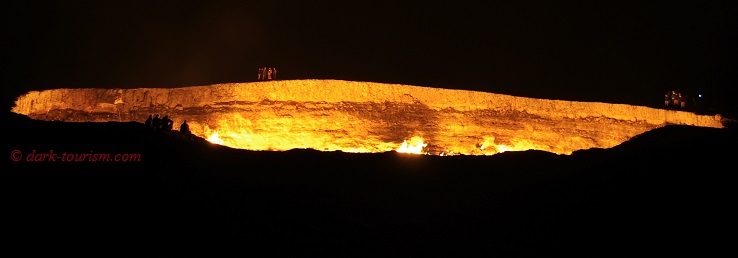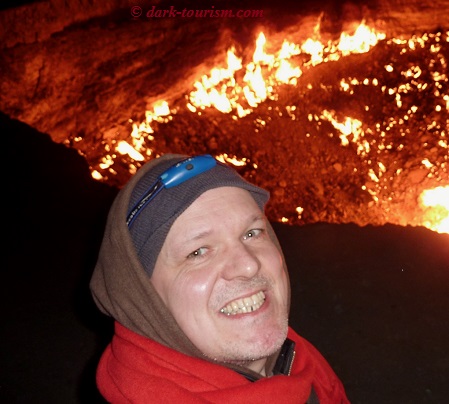Not long ago I found that an article that was published in March, based on a telephone interview I had done with the author in January, featured the above photo of me. This is indeed one of the VERY few selfies I’ve ever taken, at a time when that word ‘selfie’ didn’t even yet exist, or at least wasn’t so widespread yet, namely in November 2010, at Darvaza, Turkmenistan.
And, it is the photo that I had used as my profile picture for my private account on Facebook. Since I was “disappeared” from that platform on 21 April (full story here), this discovery almost came as a shock – like a message from my digital grave!
Anyway, here’s the link to that article – it’s in German, but if your knowledge of that language isn’t good enough, you can run the text through DeepL (an online translation tool that is often much better than Google Translate or other alternatives). Content-wise I find the article quite good, despite a few slight simplifications and one mistake: the academics who invented the term dark tourism were Brits, not Americans as this article erroneously claims.
My main dark-tourism.com website and myself were also briefly mentioned in an article in the “By the Way” travel-spin-off of the eminent Washington Post (link here!). It’s also quite good, but a bit brief, not so in-depth. When I was sent the link by the author and opened it I also noticed that there is a new slogan underneath the Gothic script name of the paper saying “Democracy Dies in Darkness”! I presume that is supposed to be a political statement linked to the frequent bashing the Washington Post gets from the current POTUS, but I also found it quite fitting for it to appear above an article about dark tourism!
Back to the above photo: it was taken at the flaming gas crater of Darvaza in the middle of the Karakum Desert in Turkmenistan. It was the top highlight of my 2010 group trip to the country. I don’t normally go on group tours (preferring to travel independently and individually), but in this case I made an exception, partly because Turkmenistan is a country in which you are not allowed to travel around freely, but also because the tour was run by the same company and was accompanied by the same guy who had led another group tour I’d been on, namely to North Korea (where similar restrictions are in place), and that had been great. The Turkmenistan trip was pretty cool as well, and Darvaza definitely the visual icing on the cake, as it were. In fact so much so that I also used another photo taken there on Facebook as my background photo, namely this:

But from now on I will stop mentioning Facebook, at least for a while, and compose posts from material that had not been featured on that platform before. I may from time to time reuse some photos from my Facebook archives on this blog again, but I won’t bang on about that nasty purge every time. Promise.




